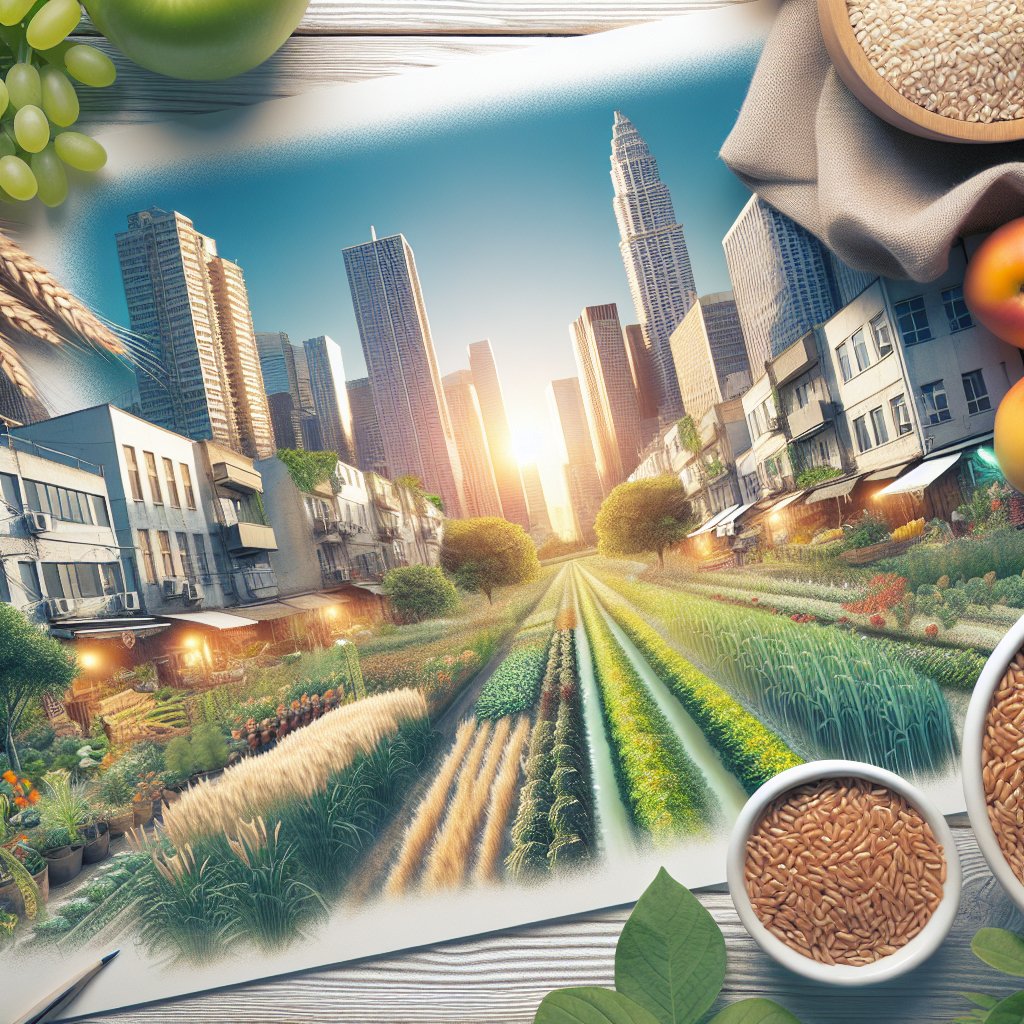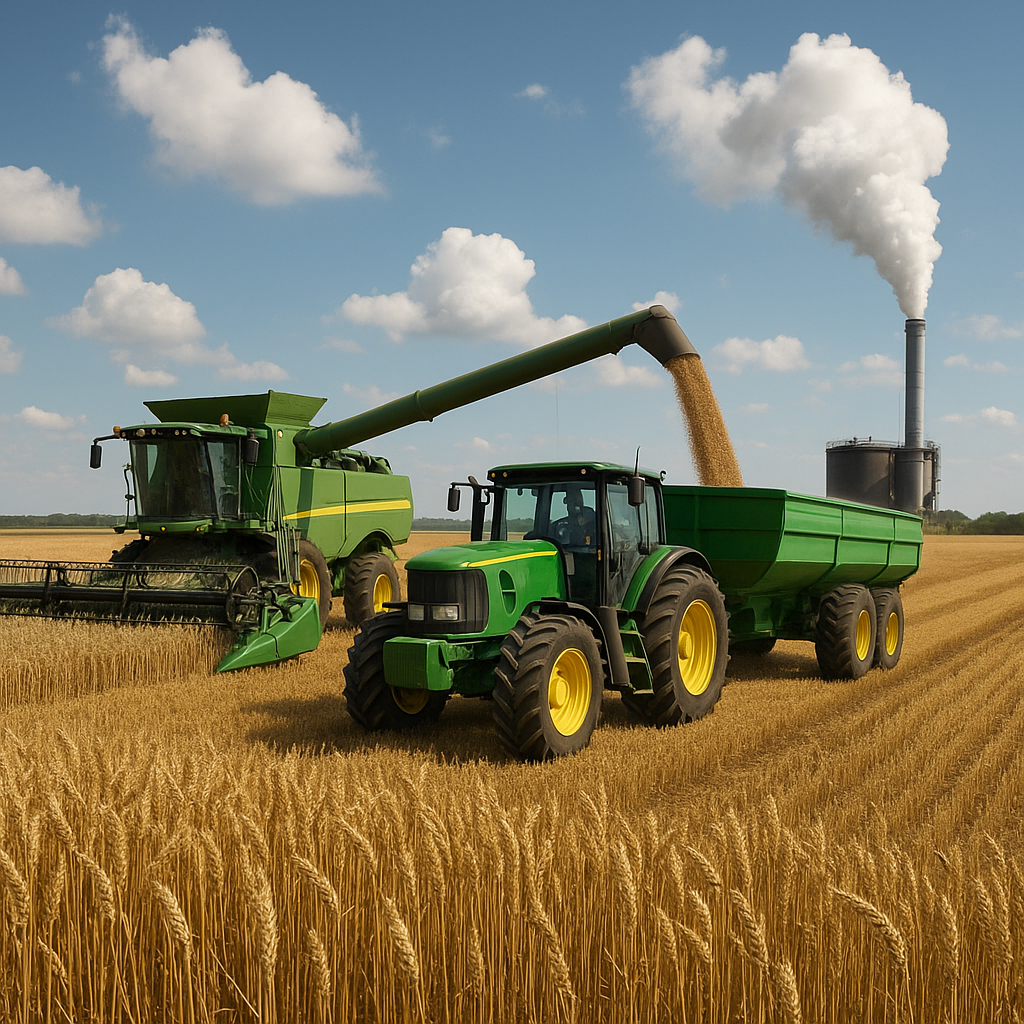Urban gardens have emerged as a vital component in the landscape of local grain markets, providing fresh produce and grains that cater to the needs of urban populations. These gardens not only enhance food security but also promote sustainable agricultural practices within city environments. This article explores the intricate relationship between urban gardens and local grain markets, highlighting their benefits, challenges, and the innovative practices that are shaping the future of urban agriculture.
The Role of Urban Gardens in Local Grain Production
Urban gardens serve as a crucial link in the supply chain of local grain production. They provide an opportunity for city dwellers to engage in agriculture, often transforming vacant lots and underutilized spaces into productive areas. This section delves into the various ways urban gardens contribute to local grain markets.
1. Enhancing Food Security
Food security is a pressing issue in many urban areas, where access to fresh and nutritious food can be limited. Urban gardens play a significant role in addressing this challenge by producing grains and other food items locally. By cultivating grains such as quinoa, barley, and wheat, urban gardeners can reduce reliance on imported products, ensuring that communities have access to fresh food sources.
2. Promoting Sustainable Practices
Urban gardens often adopt sustainable agricultural practices that benefit both the environment and the local economy. Techniques such as crop rotation, companion planting, and organic farming methods help maintain soil health and reduce the need for chemical fertilizers and pesticides. These practices not only yield healthier grains but also contribute to the overall sustainability of urban ecosystems.
3. Fostering Community Engagement
Urban gardens serve as community hubs where individuals can come together to learn about agriculture, share resources, and participate in the local economy. Workshops and events centered around grain cultivation can educate residents about the importance of local food systems and encourage them to support local grain markets. This sense of community fosters a culture of collaboration and shared responsibility for food production.
Challenges Faced by Urban Grain Producers
While urban gardens offer numerous benefits, they also face a range of challenges that can hinder their effectiveness in supplementing local grain markets. This section examines some of the key obstacles that urban grain producers encounter.
1. Limited Space and Resources
One of the primary challenges of urban gardening is the limited availability of space. Many urban areas are densely populated, making it difficult to find suitable land for grain production. Additionally, urban gardeners often face resource constraints, including access to water, soil quality, and funding for necessary tools and equipment. These limitations can restrict the scale and variety of grains that can be cultivated.
2. Regulatory Hurdles
Urban gardening is often subject to various regulations and zoning laws that can complicate grain production. Local governments may impose restrictions on the types of crops that can be grown, the use of certain agricultural practices, or the sale of produce. Navigating these regulations can be a daunting task for urban gardeners, potentially stifling their ability to contribute to local grain markets.
3. Market Access and Competition
Even when urban gardens successfully produce grains, accessing local markets can be a challenge. Urban gardeners may face competition from larger agricultural producers who can offer lower prices due to economies of scale. Additionally, establishing relationships with local retailers and consumers can require significant time and effort, which may deter some urban gardeners from pursuing grain production as a viable business.
Innovative Practices in Urban Grain Production
Despite the challenges, urban gardens are finding innovative ways to thrive and contribute to local grain markets. This section highlights some of the creative practices that urban gardeners are implementing to overcome obstacles and enhance their impact.
1. Vertical Farming and Hydroponics
Vertical farming and hydroponics are gaining popularity in urban settings, allowing gardeners to maximize limited space while producing grains and other crops. These methods utilize technology to create controlled environments that optimize growth conditions, enabling urban gardeners to cultivate grains year-round. By employing these techniques, urban gardens can increase their yield and contribute more significantly to local grain markets.
2. Community Supported Agriculture (CSA)
Community Supported Agriculture (CSA) programs have become a popular model for urban gardeners looking to connect with local consumers. By offering subscription-based services, urban gardeners can provide fresh grains and produce directly to community members. This model not only ensures a steady income for gardeners but also fosters a sense of community and encourages consumers to support local agriculture.
3. Educational Initiatives and Workshops
Education plays a crucial role in the success of urban gardens. Many urban gardeners are organizing workshops and educational initiatives to teach community members about grain cultivation, sustainable practices, and the importance of local food systems. By empowering individuals with knowledge and skills, urban gardens can inspire a new generation of urban farmers and strengthen local grain markets.
The Future of Urban Gardens and Local Grain Markets
The future of urban gardens and local grain markets is promising, as more individuals recognize the importance of sustainable food systems and local agriculture. This section explores potential developments and trends that may shape the relationship between urban gardens and grain markets in the coming years.
1. Increased Collaboration and Partnerships
As urban gardening continues to gain traction, collaboration between various stakeholders will become increasingly important. Partnerships between urban gardeners, local governments, non-profit organizations, and educational institutions can help create supportive networks that facilitate grain production and market access. By working together, these entities can address common challenges and promote the growth of local grain markets.
2. Technological Advancements
Advancements in technology will likely play a significant role in the future of urban grain production. Innovations in agricultural technology, such as precision farming tools, data analytics, and mobile applications, can help urban gardeners optimize their practices and improve yields. These technologies can also enhance market access by connecting urban gardeners with consumers and retailers more efficiently.
3. Growing Consumer Demand for Local Products
As awareness of the benefits of local food systems continues to rise, consumer demand for locally produced grains is expected to grow. Urban gardens that can effectively market their products and highlight their sustainability practices will likely find a receptive audience among health-conscious consumers. This trend presents an opportunity for urban gardeners to expand their reach and solidify their place in local grain markets.
Conclusion
Urban gardens are playing an increasingly vital role in supplementing local grain markets, offering fresh produce and grains that enhance food security and promote sustainable practices. While challenges such as limited space, regulatory hurdles, and market access persist, innovative practices and community engagement are paving the way for a brighter future. As urban gardening continues to evolve, it holds the potential to transform local food systems and contribute significantly to the resilience of urban communities.













